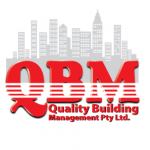Building Defects, Maintenance, And Your Insurance
Building defects are common, and property owners need to have a thorough understanding of the conditions of their assets. Causes of building defects range from the use of non-compliant building products, poor building practices, wear and tear, and the employment of non-skilled workers to build the structure. As a property owner, it becomes your responsibility to fix your building defects to ensure your property is safe for use and is legally compliant. To achieve the above, here are the necessary steps you can take with the help of your property compliance inspection specialist.
Building Defects Report
Creating an accurate report on the state of your property is the first step you can take to establish your property’s safety. It’s important to obtain detailed data on the property’s condition to enable you to make decisions on the next steps. It also helps with scheduling the maintenance/fixing routine and budgeting how much to spend working on the defects. Once the report is completed, you will be better able to budget for regular maintenance, avoiding sudden unplanned spikes in spending.
A building defects report comprises details on the entire property, including pictures of the current state of the property. This report is regularly updated to capture the most current state of the building. A qualified inspector carries out the assessment, writes the report, then advises on what steps should be taken.
Risk Assessment
Considering the risks involved in leaving the property in its current condition is essential after the assessment has been conducted and documented in the report. This risk assessment consists of looking into health, security, legal, and financial risks. Sometimes, property management companies will have an untrained staff member attempt to calculate risks associated with building defects. Unfortunately, unqualified inspectors without a building background can miss important early signs of problems, ultimately costing much more money when it comes to major repairs and even legal fees later on.
Emergency Management Plans
The results from the assessment and report drawn and the risk assessment affect the steps planned for the property. In some cases, the building may have severe defects requiring emergency management plans to fix them. The property owner and the building compliance service in charge of the project come together to decide how to manage this emergency. At QBM, we use strategic planning to make this decision.
What is Strategic Planning?
Property owners and their building compliance services provider plan carefully to make the most out of the property without spending excessively. The process aims to prioritise the order in which repairs will be carried out and determines which ones can be postponed to cut expenses. Strategic planning requires answering questions about how long the property will be in use, its current condition and the risks associated, future benefits of the building, and the value that maintaining it will add.
Property Insurance
After completing the steps above, you will be ready to start working on the necessary repairs. Now is the time to get your insurance rolling. If you are insured, you will be required to disclose the defects, issues, and maintenance plans to your insurance company. You can give them the already-created building defects report to ease this process. For uninsured properties, different insurance variations are available, and with the help of your compliance inspection specialist, you can decide which one to go with.
Bottom Line
Property maintenance can be straightforward and budget-friendly when working with a well-experienced building compliance services provider who can give you access to quality Brisbane building defects reports. By adequately documenting what needs to be done, you will also be able to provide other parties, such as potential buyers, with information about the current state of the property.
Call QBM today to speak to one of our professionals about your property and its safety.






